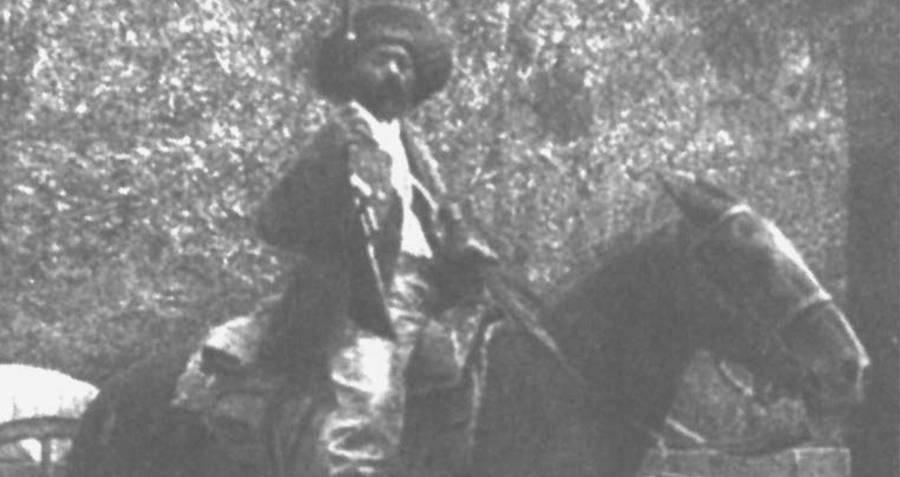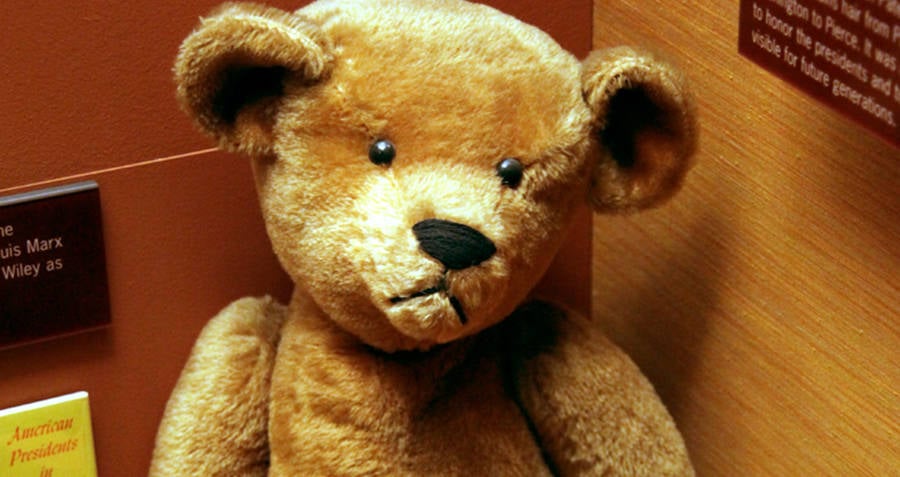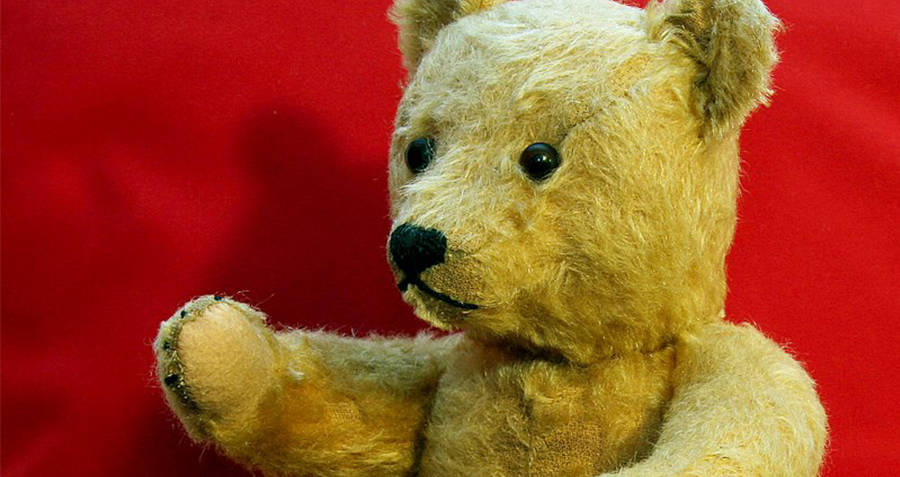Teddy bear history begins with a hunting trip, a U.S. president, and one fateful decision.

Wikimedia CommonsThe political cartoon by Clifford Berryman that inspired the teddy bear.
President Theodore Roosevelt was a big game hunter.
During his presidency, he would often take vacations to go bear hunting in the mountains, coming home with large trophies to show off to his friends. One particular excursion, however, did not result in a single trophy. Instead, the trip would ensure Roosevelt’s name would go down in history as inspiration for every child’s favorite toy.
In 1902, after a particularly rough year in office seeking peace between the coal mining companies and their striking workers, Roosevelt decided he needed a vacation. As it was, Mississippi Governor Andrew Longino had invited him on a bear hunting trip down south, and the president happily accepted.
The president arrived in Onward, Miss. in November of 1902, along with a crew of trappers, horses, hunting dogs and journalists, all eager to watch the famed hunter in action. In addition, a local freed slave named Hold Collier, who knew the swamplands well, had been appointed as the guide for the 10-day expedition.
Though Roosevelt was a seasoned hunter and was particularly skilled at hunting big game, he had one downfall — he was extremely impatient when it came to locating the game.

Wikimeda CommonsHolt Collier, the former slave who captured the bear that Roosevelt pardoned.
“I must see a live bear the first day,” he told Collier. Unfortunately, there was no such luck. Wanting to impress the president, Collier enlisted his dogs, and ultimately picked up the scent of an old black bear.
The dogs cornered the bear, but the bear fought back, killing a few of them. Wanting to save the kill for the president, who was still back at camp, but fearing for the lives of his hunting hounds, Collier roped the bear and tied it to a tree.
When Roosevelt arrived, he was expecting to be able to hunt the bear for himself. Instead, he found a bloodied, agitated bear tied to a tree. The other hunters encouraged Roosevelt to take his shot, but the president refused, believing that killing a tied bear would be unsportsmanlike.
The journalists who had accompanied the president on the trip immediately wrote back to their respective publications, telling of Roosevelt’s compassion, and before long, the news had spread throughout the country.
On Nov. 16, 1902, a Washington Post cartoonist named Clifford Berryman poked fun at the encounter, publishing a political cartoon depicting Roosevelt sparing a cute baby bear. The cartoon became so popular that Berryman included the same little bear, which he called a “teddy bear,” in his other cartoons throughout Roosevelt’s presidency.

Wikimedia CommonsA Michtom teddy bear, owned by Kermit Roosevelt, on display at the Smithsonian.
As Berryman’s cartoon came out, a man named Morris Michtom got an idea. He and his wife, Rose, owned a small penny shop in Brooklyn, N.Y, where they sold small handmade toys. The night that the cartoon was published, Rose fashioned a small plush bear out of velvet. The next morning, the Michtom’s displayed “Teddy’s Bear” in their window.
To their surprise, hundreds of people inquired about purchasing Rose’s stuffed animal. Before they would sell it, however, the Michtom’s decided to seek the president’s approval. They mailed the original bear to Roosevelt as a gift for his grandchildren, along with a letter asking his permission to use his name on the bear.
Fortunately, Roosevelt consented, and the rest is teddy bear history. The popularity of Teddy’s Bear, later shortened to “teddy bear,” drove the Michtom’s to devote themselves entirely to the manufacturing of stuffed bears, and Roosevelt even adopted the teddy bear as the symbol of the Republican Party for the 1904 election.
Before long, toymakers across America began selling versions of the teddy bear. One New York company even sold a bear, called the “berryman bear,” named in honor of Clifford Berryman, that carried an American flag, and resembled more closely the bear in the famous cartoon.

A Steiff teddy bear
The teddy bear even gained international fame, when German toymaker Richard Steiff rebranded his company’s stuffed bears as “teddy bears” and began selling them in toy stores in Germany in 1903. Within a year, toy stores across Europe were carrying Steiff’s products and teddy bear history would never be the same.
Roosevelt never anticipated the success of the bear when he lent his name to it, nor did he anticipate that such a fruitless hunt would become one of his most famous. Despite returning from Onward empty-handed, Roosevelt continued hunting for most of the rest of his life.
After his presidency and contribution to teddy bear history, he would become famous for the Smithsonian-Roosevelt expedition, which stocked the Smithsonian institution with almost 12,000 specimens.
Enjoy this article on Teddy Bear history? Next, learn how your teddy bear changed your relationship with real-life animals. Then, read about the truth behind that famous picture of Teddy Roosevelt riding a moose.





